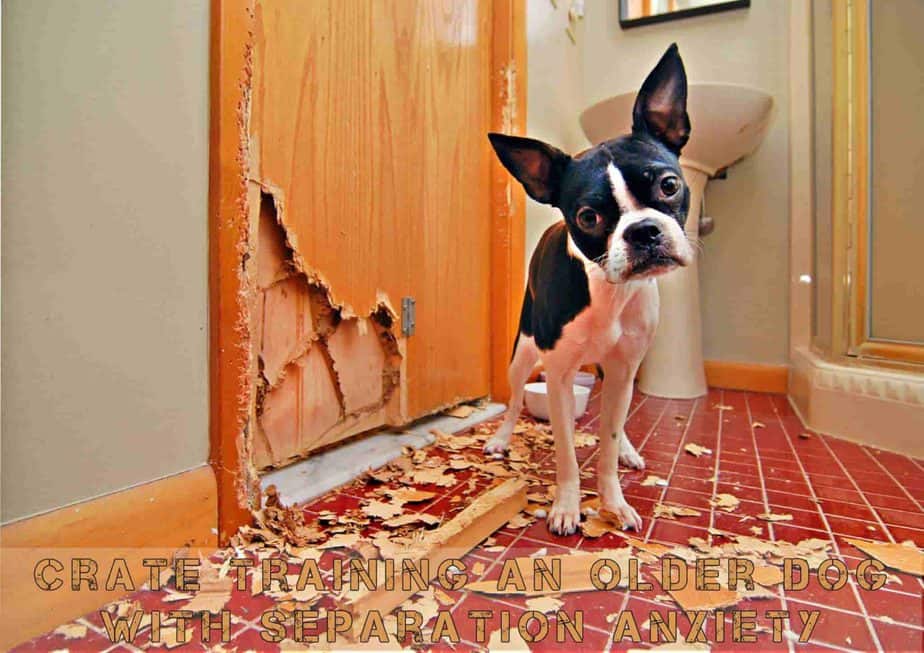how to crate train an older dog with separation anxiety
How to Crate Train an Older Dog with Separation Anxiety
Separation anxiety is a common problem in dogs, and it can be especially challenging to deal with in older dogs. When a dog is anxious about being left alone, they may bark, cry, destroy furniture, or even attempt to escape. This behavior can be disruptive and even dangerous, and it can make it difficult for you to leave your home for work or other errands.
If your older dog is struggling with separation anxiety, there are a number of things you can do to help them overcome their fears. With patience and consistency, you can help your dog learn to relax and feel safe when you're not around.
1. Identify the triggers for your dog's separation anxiety
The first step to helping your dog with separation anxiety is to identify the triggers that cause them to become anxious. Some common triggers include:
- Being left alone
- Being in a new or unfamiliar environment
- Being around other people or animals
- Hearing loud noises
- Being exposed to sudden changes
Once you've identified the triggers for your dog's separation anxiety, you can start to work on desensitization and counterconditioning them.
2. Desensitize your dog to being left alone
One of the best ways to help your dog with separation anxiety is to gradually desensitize them to being left alone. This means starting by leaving them for short periods of time and gradually increasing the amount of time you're away.
When you're first starting out, try leaving your dog for just a few minutes at a time. Make sure you leave them in a quiet room with their favorite toys and treats. You can also play some calming music or white noise to help them relax.
When you come back, be sure to greet your dog calmly and quietly. Don't make a big fuss, as this could just make them more anxious.
As your dog starts to get used to being left alone, you can gradually increase the amount of time you're away. Be sure to go slowly and never leave your dog for longer than they can handle.
3. Countercondition your dog to being left alone
Counterconditioning is a training technique that can help to change your dog's association with being left alone. This involves pairing something your dog loves (like a treat or a toy) with the act of being left alone.

To start, give your dog a treat or toy right before you leave the room. Then, leave the room for a few seconds and come back. Repeat this process, gradually increasing the amount of time you're away.
Over time, your dog will start to associate being left alone with something positive (like getting a treat or a toy), and their anxiety will start to decrease.
4. Provide your dog with a safe space

It's important to provide your dog with a safe space where they can relax and feel secure when you're not around. This could be a crate, a dog bed, or a quiet room. Make sure the space is comfortable and has plenty of toys and treats.
You can also make the space more secure by blocking off any escape routes and providing your dog with a view of the door so they can see you coming and going.
5. Exercise your dog regularly

One of the best ways to reduce separation anxiety is to make sure your dog gets enough exercise. Exercise helps to tire your dog out, which can make them less likely to be anxious.
Try to walk your dog for at least 30 minutes each day, or play fetch or another interactive game. You can also take your dog to the dog park or a hiking trail.
6. Enroll your dog in obedience training

Obedience training can help your dog to learn basic commands, which can give them more confidence and control over their environment. It can also help to teach your dog to stay calm and focused when you're not around.
There are many different types of obedience training programs available, so you can find one that fits your dog's needs and personality.
7. Use calming aids

There are a number of calming aids that can help to reduce your dog's separation anxiety. These include:
- Adaptil diffusers or collars
- Thundershirts
- CBD oil
- Herbal supplements
Talk to your veterinarian about which calming aids are right for your dog.

8. Get professional help
If you're struggling to help your dog with separation anxiety, it's important to get professional help. A certified animal behaviorist can help you assess your dog's needs and develop a customized treatment plan.
With patience and consistency, you can help your older dog overcome their separation anxiety and enjoy a happy and fulfilling life.

Additional
Thank you for exploring our website by how to crate train an older dog with separation anxiety. Your presence fuels our commitment to excellence. Come back for a more enriching experience!
